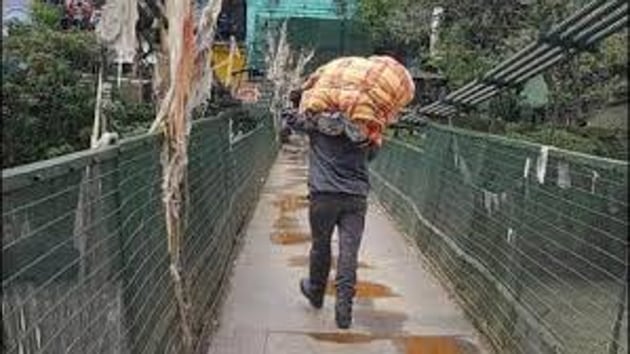Nepal tells India not to restrict movement of its people in contested areas in Uttarakhand
Nepal says Limpiyadhura, Kalapani and Lipulekh belongs to it and its people can move freely in these places.
Nepalese authorities have insisted that Limpiyadhura, Kalapani, Lipulekh in Uttarakhand’s Pithoragarh district fall under Nepal’s territory where their citizens can move in and said that “no hindrances should be put in their movement by Indian authorities”.

Nepalese authorities claimed that they wrote the letter after officials on the Indian side raised the matter of ‘illegal’ entry of Nepalese citizens into the Indian territories of Kalapani, Limpiyadhura and Gunji under the sub-division of Pithoragarh through a communiqué.
The letter of July 28 written by Darchula district administration of Nepal is said to be in reply to a letter purportedly sent by sub-divisional magistrate (SDM) Dharchula sub-division of Pithoragarh in which he had apprised his Nepalese counterparts to look into the ‘illegal’ entry of Nepalese citizens into the Indian territories of Kalapani, Limpiyadhura and Gunji under the sub-division of Pithoragarh.
The letter from the Nepalese stated that “the movement of Nepalese people in those areas (disputed areas) is natural. No hindrances should be put in their movement by Indian authorities.” Hindustan Times has copies of both the letters.
Tek Singh Kunwar, assistant chief district officer of Neoal’s Darchula district said after Indian officials raised the issue of illegal movement of “our people in Kalapani, Gunji and Limpiyadhura and asked us to stop it, we immediately apprised our higher authorities in Kathmandu on this and later wrote a letter from our side two days ago as per their directions”.
In the letter written on the official letterhead of Home Ministry, Government of Nepal which also carries the name of the Darchula District administration office, Kunwar stated that “As per the Treaty of Sugauli signed between Nepal and erstwhile British East India Company in 1815, the areas east to Kali (Mahakali) river which includes Limpiyadhura, Kalapani, Lipulekh, Gunji, Nabi and Kuti fall under Nepal’s territory. Hence, the movement of Nepalese people in those areas is natural. No hindrances should be put in their movement by Indian authorities.”
The Treaty of Sugauli between the British and Nepal was signed in December 1815 and ratified in March 1816. It defined river Kali as the western border of Nepal. India asserts that the river begins in Kalapani as this is where all its tributaries merge, but Nepal claims that the river begins from Lipulekh Pass.
Kunwar said “as per the new map released by our government, these areas fall under Nepal’s territory. However, as far as the question of our people going there is not possible because of the existing lockdown.”
“There is a battalion of Nepal’s armed forces deployed near it in our area who are also carrying out the survey work for construction of a road in our Tinker village near Lipulekh. Indian officials might have got to know about it only,” said Kunwar.
Meanwhile, AK Shukla sub divisional magistrate of Dharchula in Pithoragarh district denied writing any letter to the Nepalese authorities. “I have not written any sort of letter to them,” said Shukla when contacted on the issue.
District magistrate Pithoragarh Vijay Jogdande also said he was not aware of any letter sent by Nepalese officials.
Relations between India and Nepal have soured recently after the former inaugurated a road connecting Dharchula to Lipulekh near border with the Tibet Autonomous Region in China on May 8 to facilitate pilgrims going to Kailash Mansarovar.
Following the development, Nepal’s Parliament on June 18 passed a constitutional amendment under which it unanimously voted to endorse the new political map that shows the areas of Lipulekh, Kalapani and Limpiyadhura as part of Nepal.






